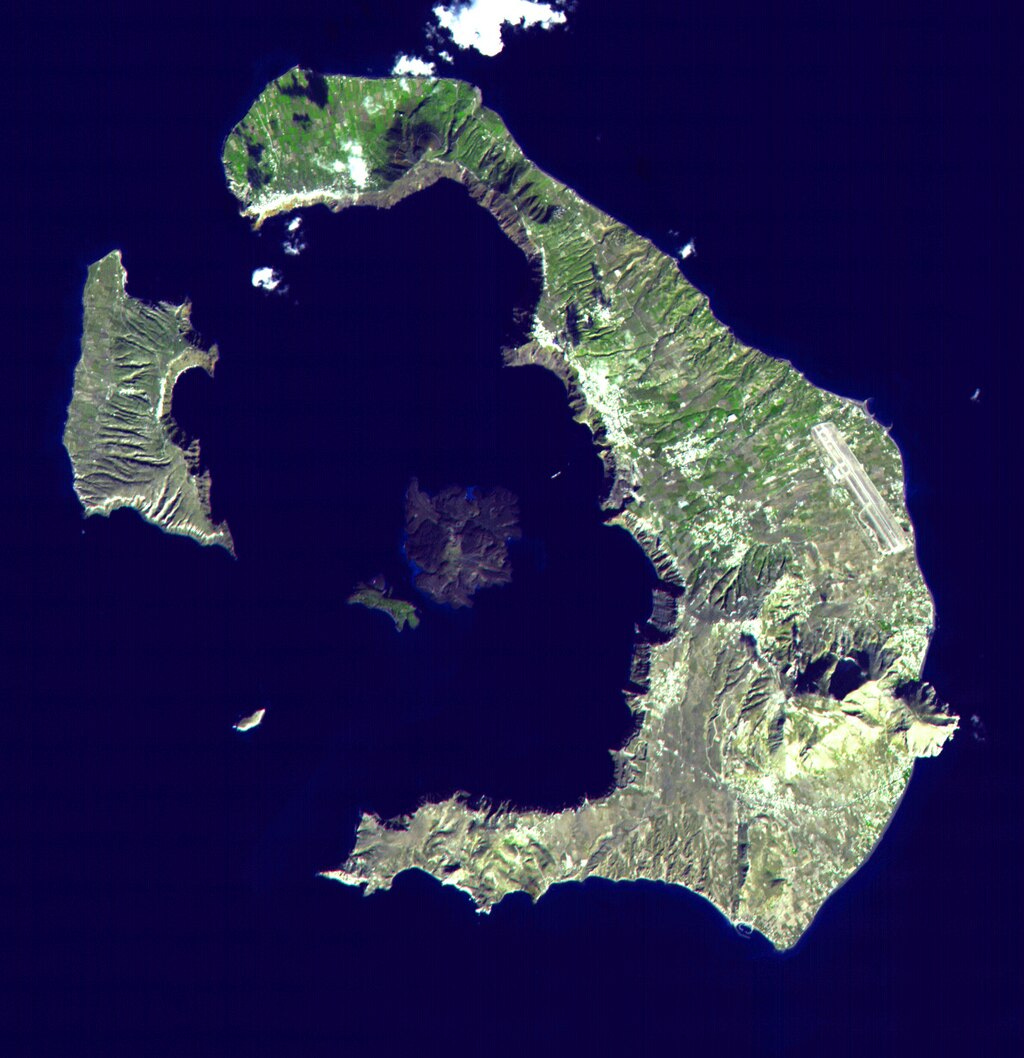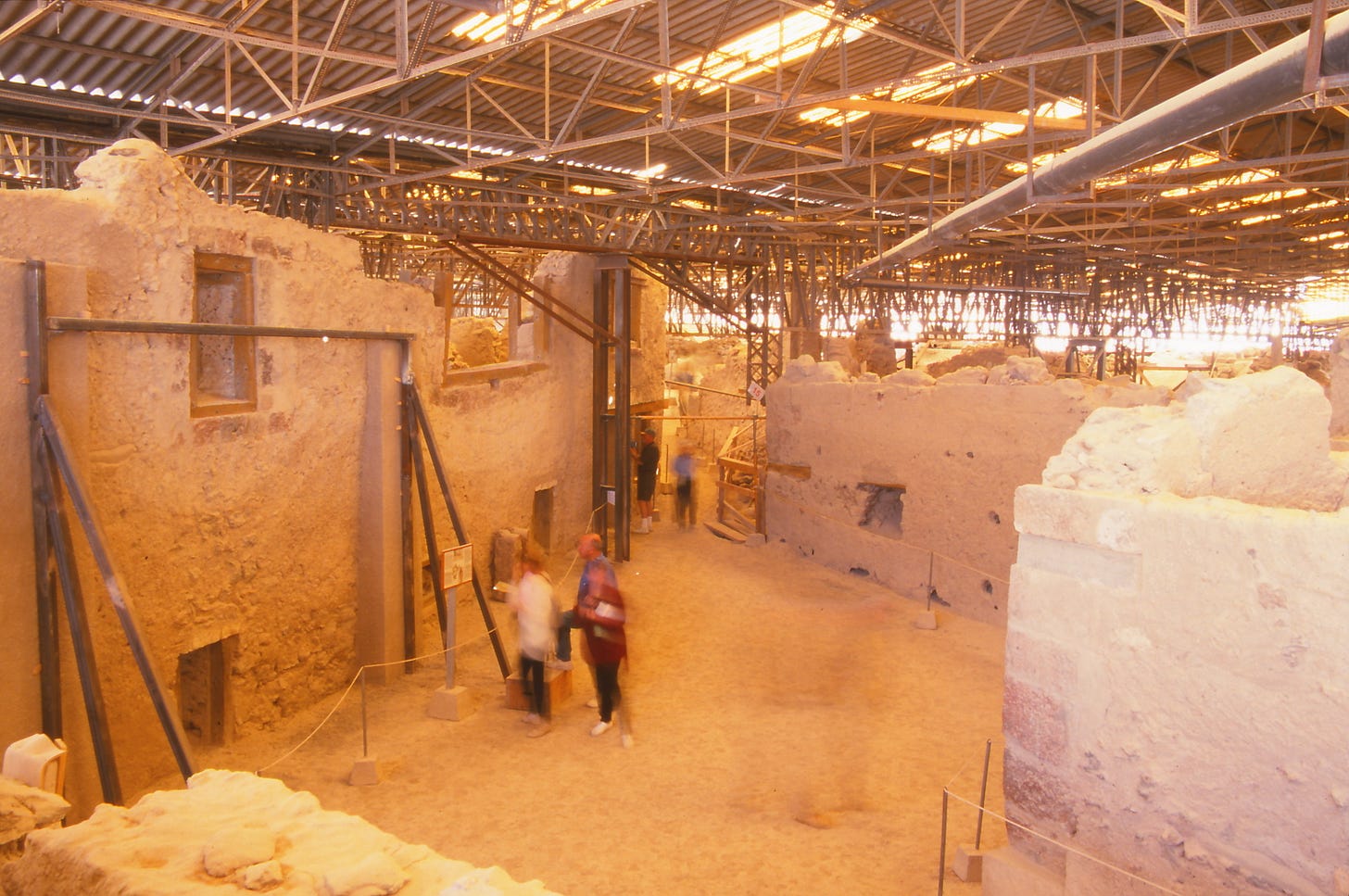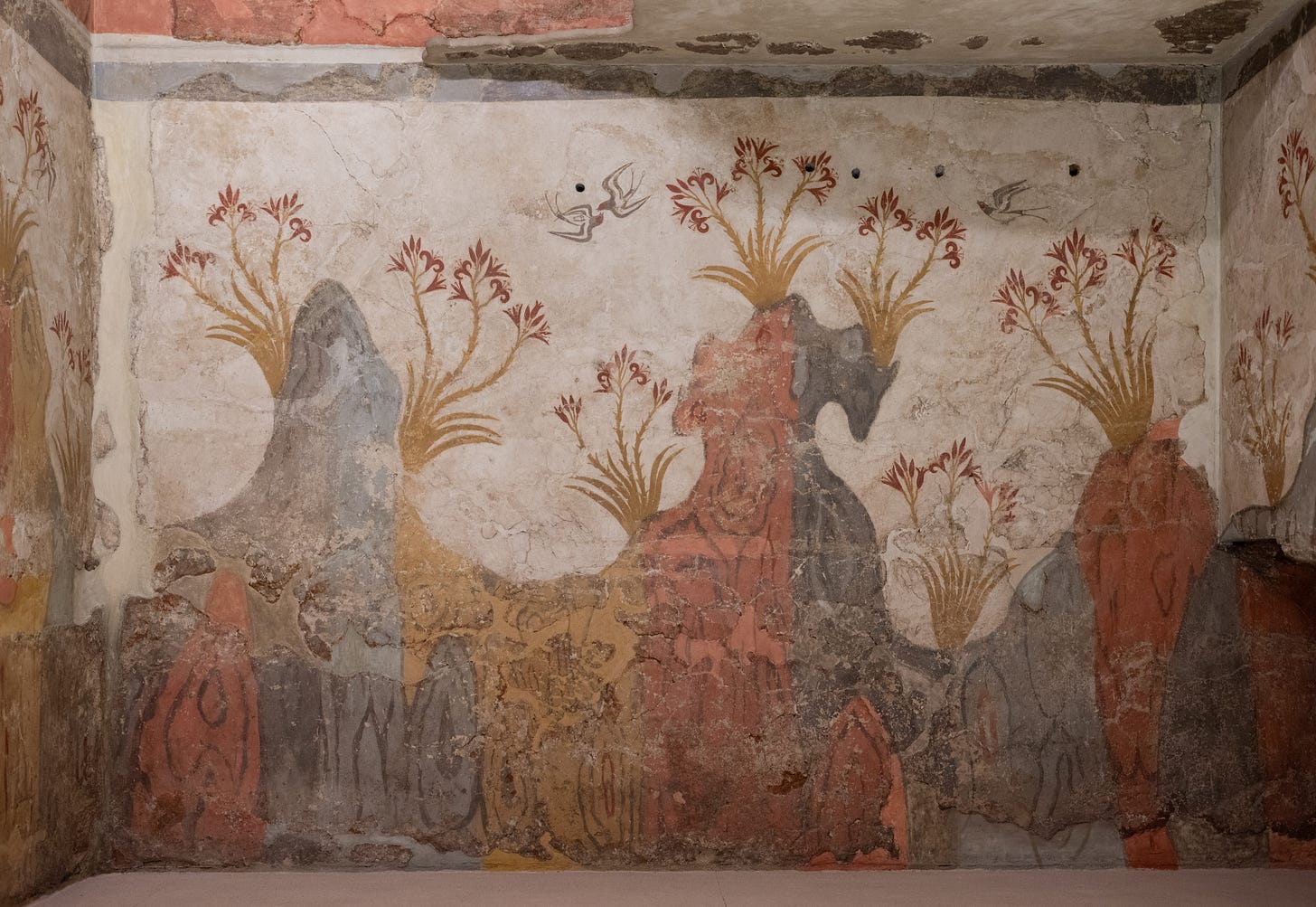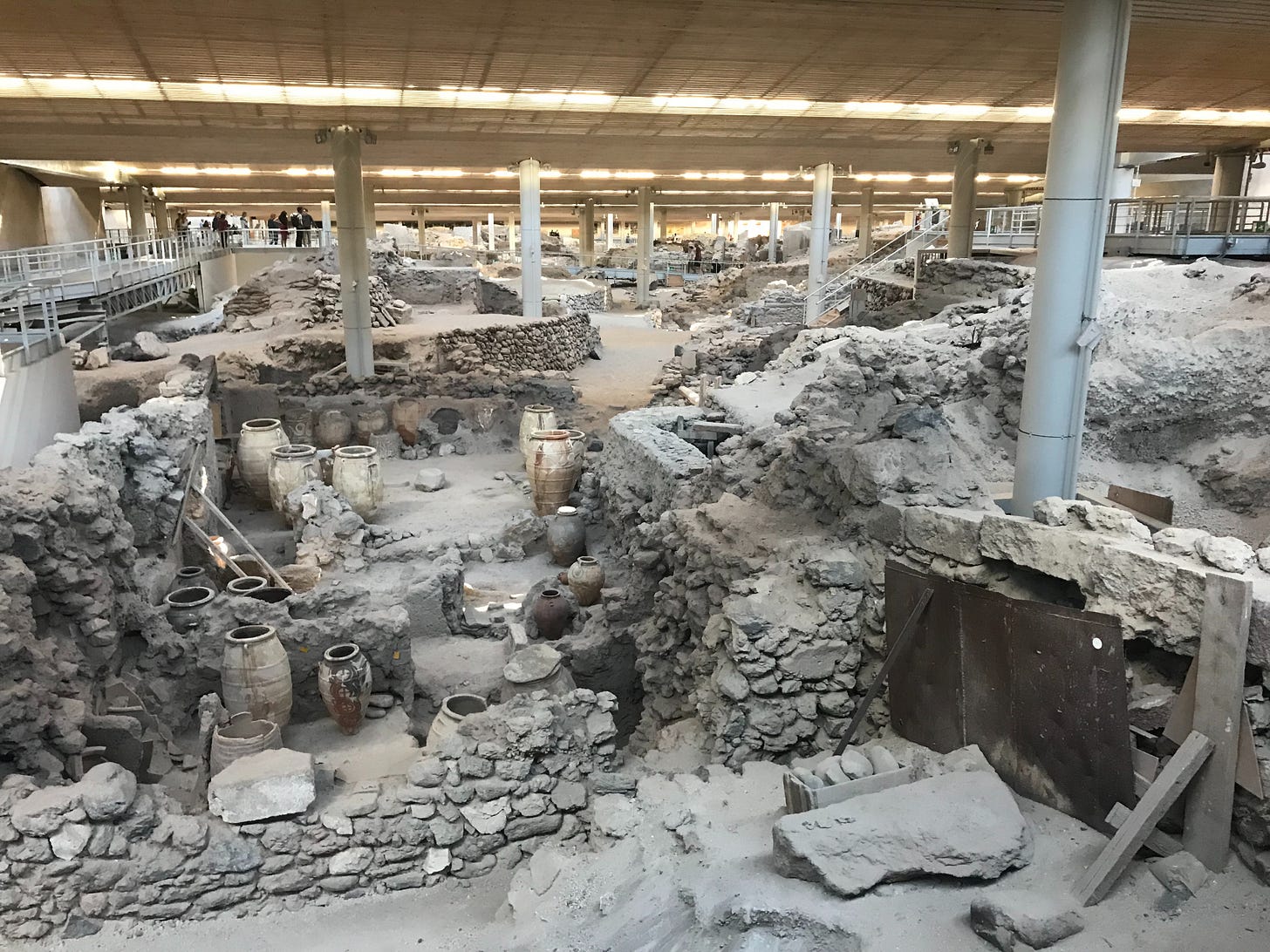Born from Catastrophe: Santorini Beyond the Postcard
A story of volcanic fury, lost civilizations, and a tightrope walk between tradition and the tourist crush.
Hello, Dear Reader
This edition of Cultural Canvas takes us to Santorini—not just the postcard-perfect island, but the volcanic powerhouse that rose from destruction.
Visitors arrive expecting whitewashed houses clinging to cliffs, sunsets that turn the Aegean into liquid gold, and an island designed solely for romance.
But beneath the beauty lies a violent past, an island sculpted by volcanic fury, lost civilizations, and an ever-present battle between creation and destruction.
To understand Santorini, you need to look beyond the surface, beyond the postcard.
So, let’s uncover the truths that make Santorini extraordinary. Enjoy the journey!
Born from Catastrophe: The Volcanic Shaping of Santorini
Santorini was never meant to be gentle.
3,600 years ago, the island we now know didn’t exist. In its place stood Strongili, the round island, a thriving landmass in the Aegean. Then, in an instant, everything changed.
The Minoan Eruption, one of the most powerful volcanic explosions in history, shattered Strongili, causing its center to collapse into the sea, leaving behind the jagged crescent that forms Santorini today.
The blast was so fierce that:
Ash buried entire cities as far away as Egypt.
Tsunamis slammed into Crete, leading to the decline of the Minoan civilization.
Some believe the disaster inspired the legend of Atlantis, the lost city swallowed by the sea.
The volcano didn’t just destroy Santorini, it created it.
Every dramatic cliff, every surreal beach, every wine-rich volcanic soil traces back to that single explosion.
Akrotiri: The City That Time Forgot
Beneath the ash, Santorini hides an ancient secret—Akrotiri, the lost Minoan city buried by the eruption.
Long before Santorini became a tourist paradise, Akrotiri thrived as a wealthy trading hub. It had paved streets, multi-story buildings, elaborate frescoes, and some of the most advanced infrastructure of its time. But when the volcano erupted, Akrotiri was sealed in time, preserved under meters of ash like a Greek Pompeii.
Walking through the ruins, you can almost hear the echoes of a civilization frozen in its final moment—a city abandoned in haste, with food left untouched, possessions scattered, and frescoes depicting a life that would never return.
Survival & Transformation
Santorini didn’t just endure—it reinvented itself, century after century.
Spartans arrived around 1100 BC, renaming it Thera, dedicating it to their ruler.
During Venetian rule (13th–16th century), Santorini became a fortress against pirate invasions, filling the island with watchtowers and castles.
Under Ottoman rule, Santorini’s volcanic soil gave birth to the legendary Assyrtiko wine, making it an island of vineyards.
In the 20th century, a devastating earthquake in 1956 reshaped its towns once more, forcing its people to rebuild yet again.
Santorini is a survivor, constantly evolving, constantly reborn.
Cultural Canvas is a reader-supported publication. Every like, comment, share, or donation helps us grow—your support truly matters!
Beyond the Postcard
The true Santorini is not found in packed sunset spots or infinity pools overlooking the caldera. To feel the island’s soul, you have to venture deeper:
Pyrgos—a medieval village untouched by mass tourism, where winding streets lead to hidden churches and panoramic views.
Vlychada Beach—a moonscape of volcanic cliffs, where the wind has sculpted the landscape into surreal formations.
Local vineyards—where ancient winemaking techniques create a crisp, mineral-rich flavor only found in Santorini.
Nea Kameni—the still-active volcano rising from the caldera, reminding visitors that Santorini’s story is not over.
This island is not just beauty—it’s history, survival, and mystery woven into every wave and stone.
Santorini is a paradox, born from destruction, yet breathtakingly alive. It was shattered by nature, yet it thrives. It has seen empires rise and fall, yet it remains, standing on the edge of the world, where fire and water collide.
Beneath the whitewashed walls and shimmering waters lies a past that refuses to fade.
As travelers, we seek places that stir something within us, places that remind us that beauty and destruction often walk hand in hand. Santorini is one of those places—a testament to survival, reinvention, and the unshakable pulse of history.
Until next time, keep exploring, keep questioning, and explore places beyond their facade.
Muse
Missed our last story? Read it here ↓








Ahhh, Greece